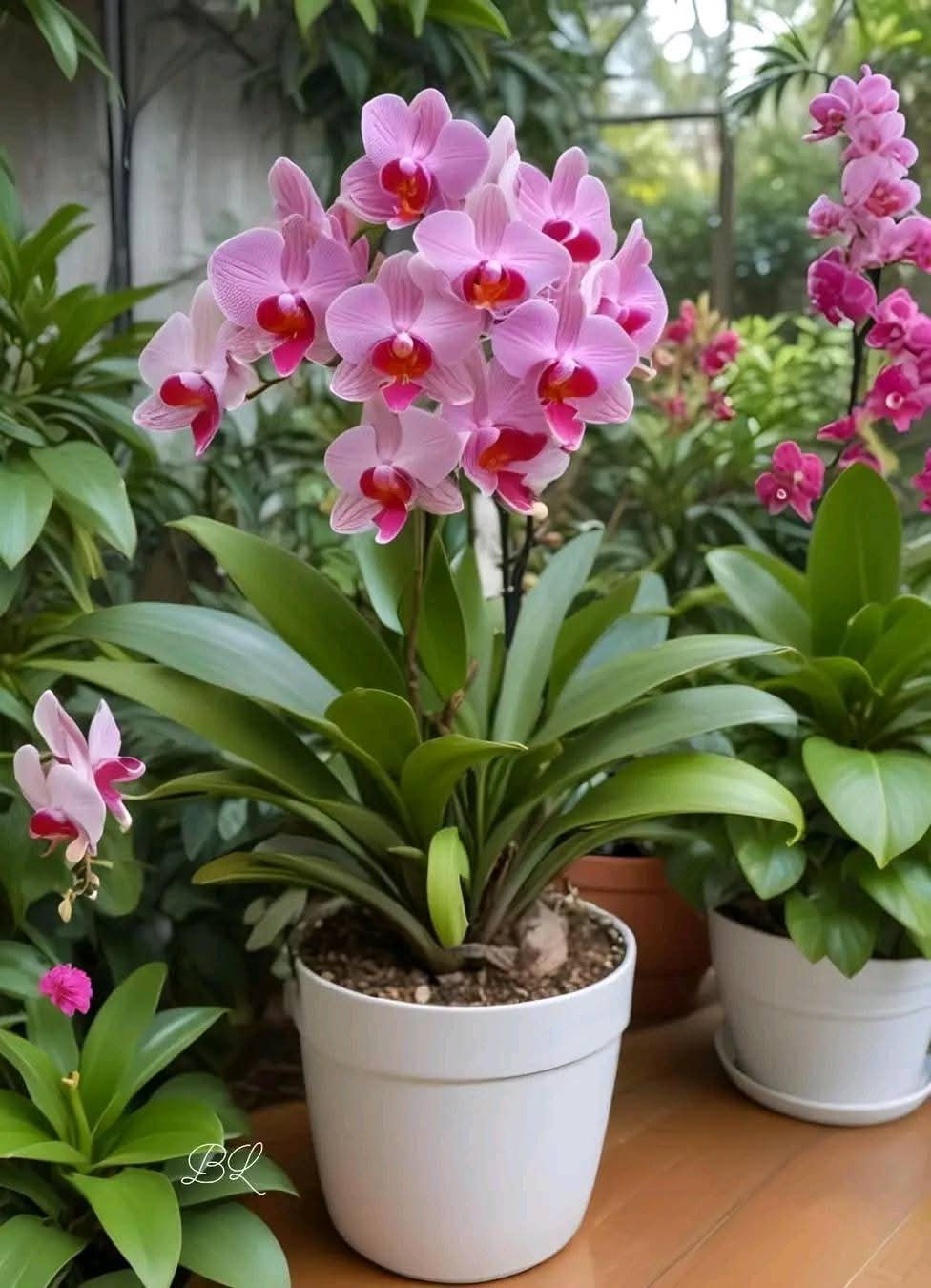Dendrobium orchids are among the most diverse and breathtaking orchids, known for their vibrant colors, elegant blossoms, and long-lasting flowers. If you’re looking to cultivate a stunning Dendrobium orchid with pink blooms, a gradient from deep pink to lighter pink, and waxy dark green leaves, this guide will help you care for it successfully.
Why Choose a Dendrobium Orchid?
- Stunning Blooms
Dendrobium orchids produce gorgeous flowers that can last weeks to months, adding beauty to any space.
- Low Maintenance
With the right care, these orchids thrive indoors and outdoors with minimal effort.
- Long-Lived Plant
Unlike some orchids, Dendrobiums can bloom multiple times a year and survive for decades.
How to Grow and Care for Dendrobium Orchids
- Light Requirements
Place in bright, indirect light for at least 6 hours a day.
Best Locations: Near an east- or south-facing window indoors, or in a shaded outdoor area with filtered sunlight.
Avoid direct midday sun, as it can scorch the leaves.
- Temperature & Humidity
Ideal temperatures: 65-85°F (18-29°C) during the day and slightly cooler at night.
These orchids prefer moderate to high humidity (50-70%).
If humidity is low, use a humidity tray or mist the leaves occasionally.
- Watering Needs
Water when the potting medium is nearly dry. Stick a finger into the mix—if it feels dry, it’s time to water.
Avoid overwatering, as it can cause root rot. Dendrobiums prefer a dry-out period between waterings.
Use room-temperature water and allow it to drain completely. Never let the roots sit in water.
- Choosing the Right Pot & Soil
Best Pot: A well-draining ceramic, plastic, or clay pot with drainage holes.
Potting Mix: A bark-based orchid mix with materials like sphagnum moss, charcoal, and perlite for aeration.
Avoid regular potting soil, as it retains too much moisture and suffocates the roots.
- Fertilizing for Healthy Growth
Feed with a balanced orchid fertilizer (20-20-20) every 2 weeks during the growing season (spring and summer).
Reduce feeding to once a month in fall and winter when growth slows down.
Flush the soil with plain water once a month to remove salt buildup.
Common Problems & Solutions
- Why Are My Orchid’s Leaves Turning Yellow?
Cause: Overwatering, too much direct sunlight, or lack of nutrients.
Fix: Adjust watering schedule, move to indirect light, and fertilize regularly.
- Why Isn’t My Dendrobium Blooming?
Cause: Insufficient light, improper fertilization, or lack of a temperature drop at night.
Fix: Place it in brighter light, use bloom-boosting fertilizer (higher in phosphorus), and expose it to cooler nights (55-65°F/13-18°C) to encourage flowering.
- What to Do If the Flowers Drop Too Soon?
Cause: Sudden temperature changes, low humidity, or underwatering.
Fix: Maintain stable conditions, increase humidity, and keep the plant evenly watered.
Repotting & Maintenance Tips
Repot every 2-3 years, or when the potting mix starts breaking down.
Always use fresh orchid mix and a slightly larger pot if the plant outgrows its container.
Trim dead leaves and spent flower spikes to encourage new growth.
Final Thoughts
Growing a Dendrobium orchid can be a rewarding experience, especially when it blooms in its pink, gradient-colored glory. With the right light, proper watering, and occasional feeding, your orchid will thrive and produce breathtaking flowers for years.
Do you have a Dendrobium orchid? Share your care tips and experiences in the comments!
More Articles You Might Like
-
Texas Toast Sloppy Joes: The Crunchy, Cheesy Upgrade You Didn’t Know You Needed
There’s something timeless about sloppy joes. For generations, this saucy, savory, and slightly sweet ground beef sandwich has been a go-to comfort food in American kitchens. It’s quick, filling, and family-friendly—perfect for busy weeknights. But what if we told you there’s a way to take this classic dish up a notch? Enter the Texas Toast…
-
Classic Pig Pickin’ Cake
When it comes to Southern desserts, few sweets shine as brightly as the Classic Pig Pickin’ Cake. This nostalgic cake, sometimes called a “Mandarin Orange Cake,” has roots deep in Southern tradition. It gets its playful name from its frequent appearance at pig pickin’s—Southern-style barbecue gatherings where communities come together to enjoy slow-cooked pork, sides,…
-
Lemon Garlic Butter Chicken with Creamy Parmesan Pasta
There’s something irresistible about the combination of tender, golden-browned chicken paired with a creamy pasta coated in Parmesan cheese. Add the brightness of lemon, the depth of garlic, and the richness of butter, and you have a recipe that feels indulgent yet approachable enough for a weeknight dinner. Lemon Garlic Butter Chicken with Creamy Parmesan…



